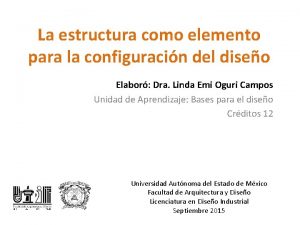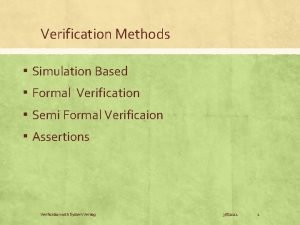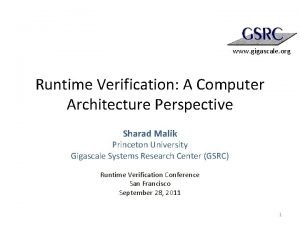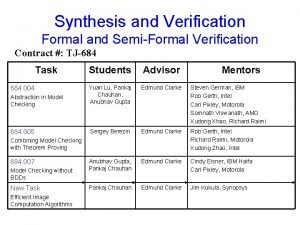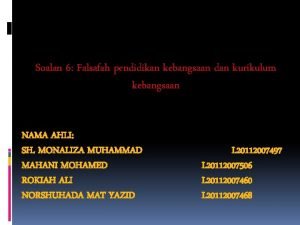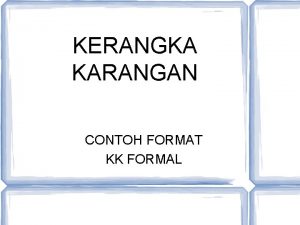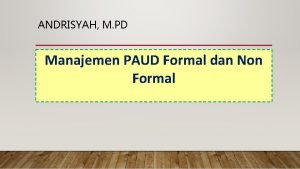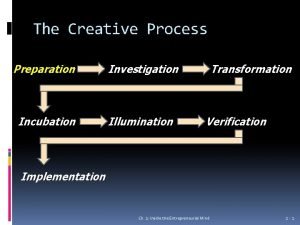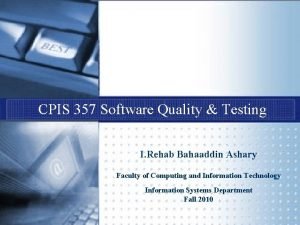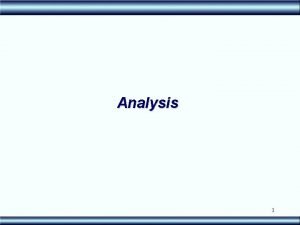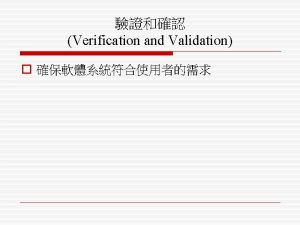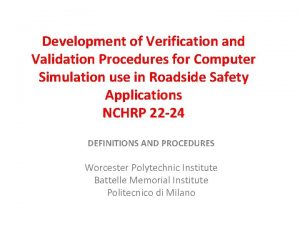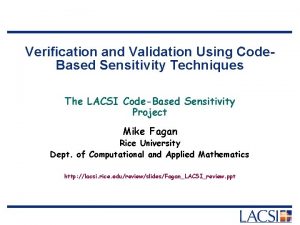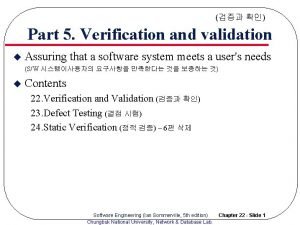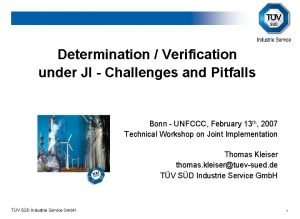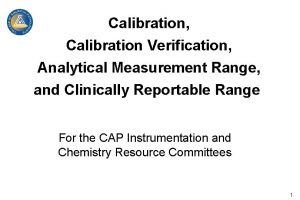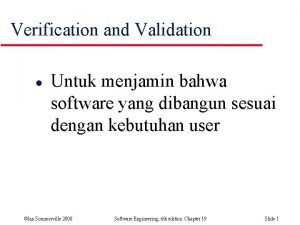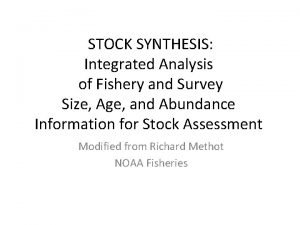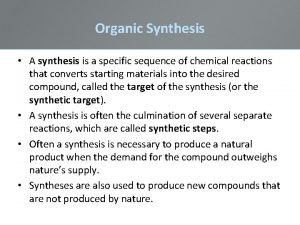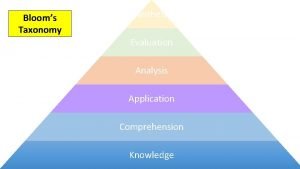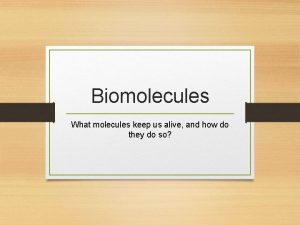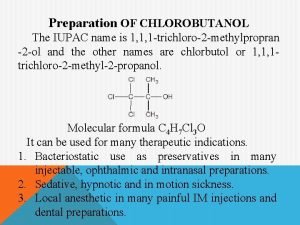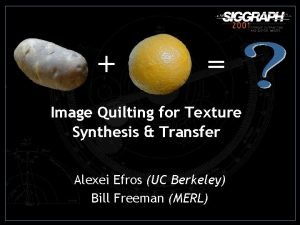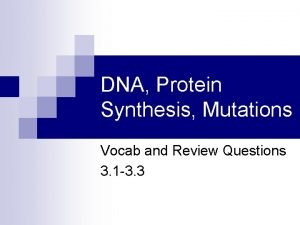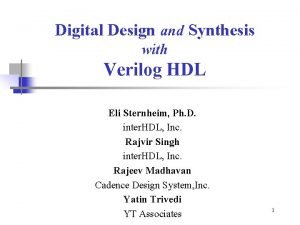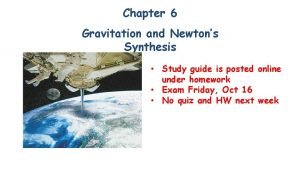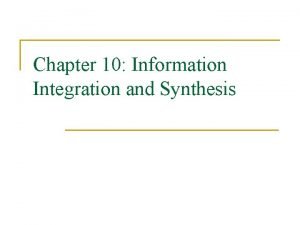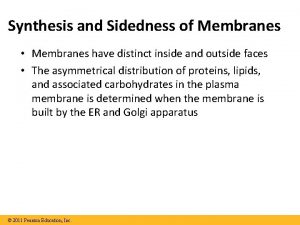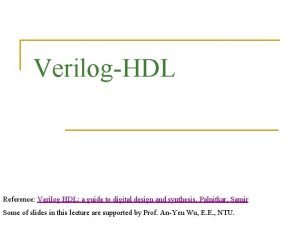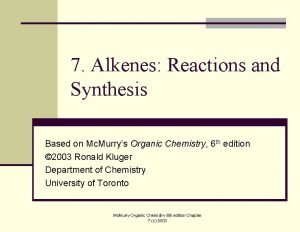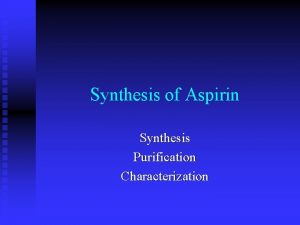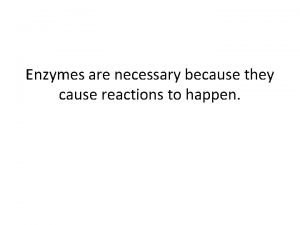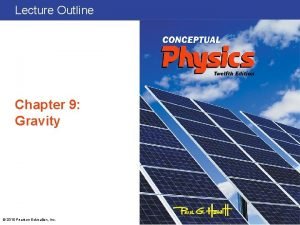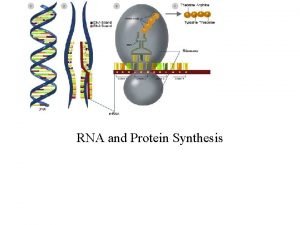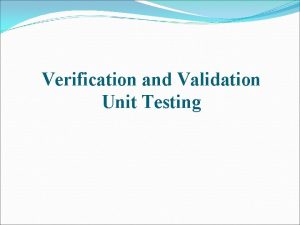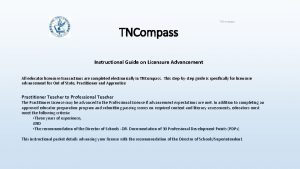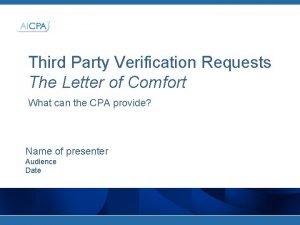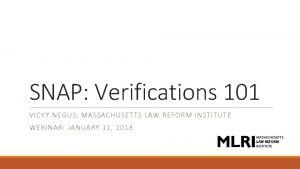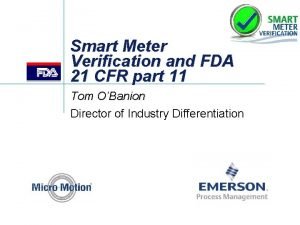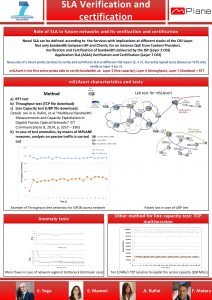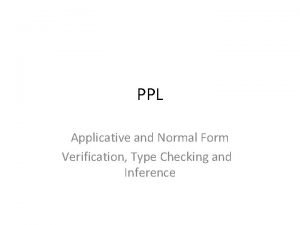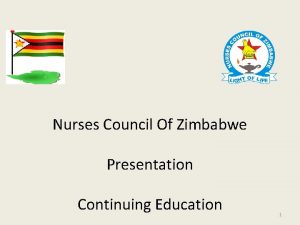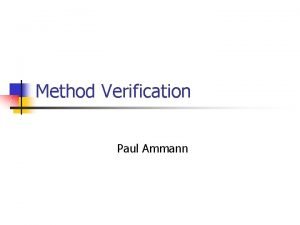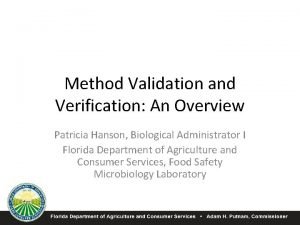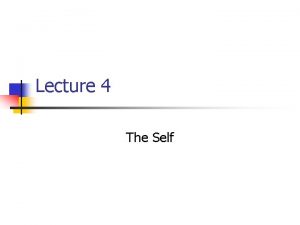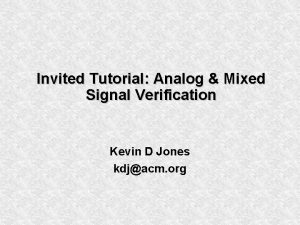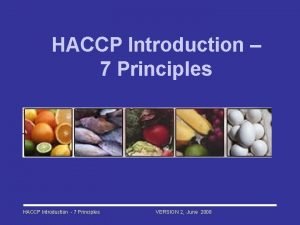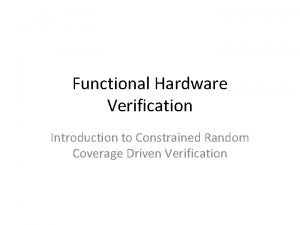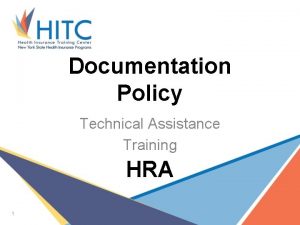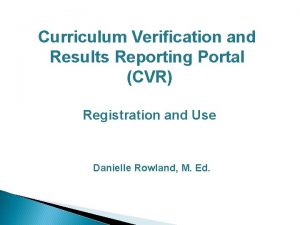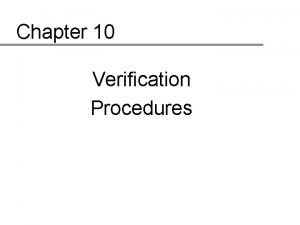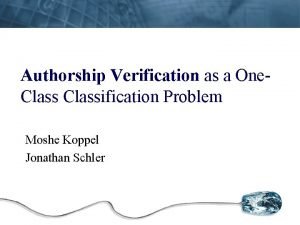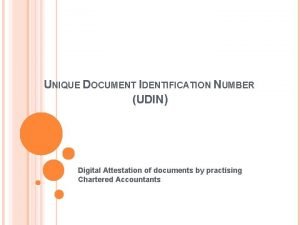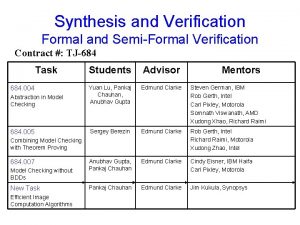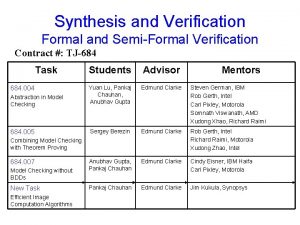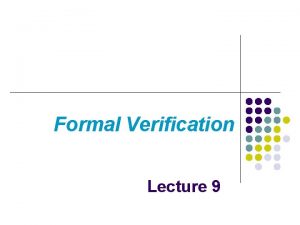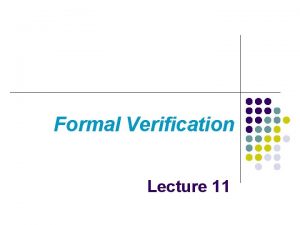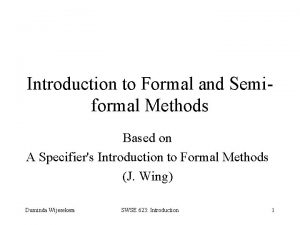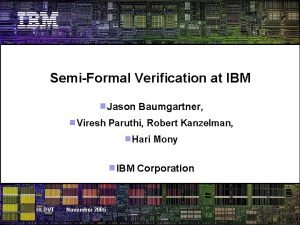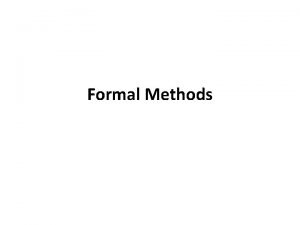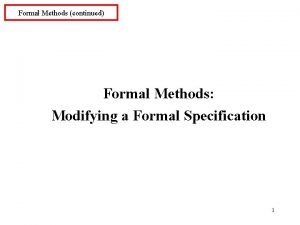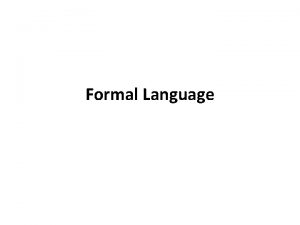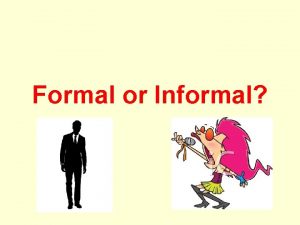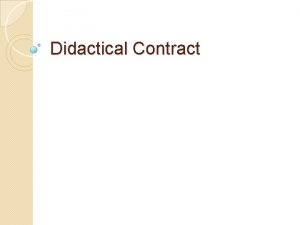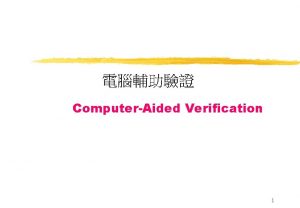Synthesis and Verification Formal and SemiFormal Verification Contract


































![Coding the Model in Sy. MP Module with parameter module M[type Index] = begin Coding the Model in Sy. MP Module with parameter module M[type Index] = begin](https://slidetodoc.com/presentation_image/968196c34ac2b2fd409ace8c3630669d/image-35.jpg)


























































- Slides: 93

Synthesis and Verification Formal and Semi-Formal Verification Contract #: TJ-684 Task Students Advisor Edmund Clarke Abstraction in Model Checking Yuan Lu, Pankaj Chauhan, Anubhav Gupta Steven German, IBM Rob Gerth, Intel Carl Pixley, Motorola Somnath Viswanath, AMD Xudong Xhao, Richard Raimi 684. 005 Sergey Berezin Edmund Clarke Rob Gerth, Intel Richard Raimi, Motorola Xudong Zhao, Intel Anubhav Gupta, Pankaj Chauhan Edmund Clarke Cindy Eisner, IBM Haifa Carl Pixley, Motorola Pankaj Chauhan Edmund Clarke Jim Kukula, Synopsys 684. 004 Combining Model Checking with Theorem Proving 684. 007 Model Checking without BDDs New Task Efficient Image Computation Algorithms Mentors

Accomplishments! Yuan Lu (now at Broad. Comm Inc. ) and Marius Minea (now Post. Doc at Berkeley) graduated in the year 2000!

Automatic Abstraction by Counterexample-guided Refinement Edmund M. Clarke Yuan Lu Pankaj Chauhan Anubhav Gupta Joint work with Orna Grumberg, Somesh Jha, Helmut Veith 9/30/2020 3

684. 004: Abstraction in Model Checking • Description: – Counterexample-guided Abstraction Refinement • Goals: – To provide a new abstraction technique to verify large designs.

684. 004: Abstraction in Model Checking • Plans and directions for the current year (2000): – Experiment with other abstraction refinement techniques ü Experiment on benchmark and industrial designs ü Abstraction in the context of bounded model checking Experiment on industrial designs (PCI bus protocol)

684. 004: Abstraction in Model Checking • Accomplishments for the current year (2000): ü Yuan Lu graduated! ü Automatic abstraction generation ü Release of a. SMV tool ü Extensive experimentation with impressive results

684. 004: Abstraction in Model Checking • Plans and directions for the next year (2001): – Extending the methodology to include all ACTL countertexamples – Using SAT for refinement of large state spaces

684. 004: Abstraction in Model Checking Milestones ü Automatic abstraction function generation (31 -Dec 2000) X Development of hierarchical verification algorithms (31 Dec-2000) • Extending the methodology to include all ACTL* counterexamples and implementation (31 -Dec-2001) • Using SAT based techniques for refinement of large state spaces (31 -March-2001)

684. 004: Abstraction in Model Checking Deliverables X Report on hierarchical model checking without flattening for hierarchical circuit descriptions (Planned 31 -Dec-2000) X Report on model checking of hierarchically structured SMV and State. Charts for embedded systems and mixed hardware designs (Planned 31 -Dec-2001) • Report/Paper on Extension of methodology for all counterexamples (Planned 31 -Dec-2001) • New version of a. SMV with this feature (Planned 30 -March-2001) • Report/Paper on refinement using large state spaces (Planned 31 June-2001) • New version of a. SMV with SAT based refinement (Planned 31 -Dec -2002)

Existential Abstraction Given an abstraction function h : S Sh, the concrete states are grouped and mapped into abstract states Mh M < Mh and Mh |= M |= h M h h

Our Abstraction Methodology (CAV’ 2000) M and generate initial abstraction Mh Mh |= model check Mh |= refinement Th is spurious 9/30/2020 generate counterexample Th Th check spurious counterexample stop Th is not spurious 11

Highlights of Our Methodology • Impressive results, on average, 3. 5 x time, 17 x space improvements! • A large Fujitsu multimedia processor verified • Handles all ACTL* loop/path counterexample • But…. – What about non-loop/non-path counterexamples? – What if infeasible to check validity of counterexamples?

General Counterexamples for ACTL* Not all the counterexamples in ACTL* are linear (path or loop). ê How to refine the abstraction when a counterexample is not linear? ê What ê How are counterexamples? to generate “readable” counterexamples?

Tree-like Counterexamples What does the counterexample for (AG p) (AF q) look like? (AG p) (AF q) (EF p) (EG q) EF p (EF p) (EG q) q EG q q q p 9/30/2020 q q q p q q 14

Counterexamples for ACTL Theorem All ACTL formulas have tree-like counterexamples. Why tree-like counterexamples ? ê easy to diagnose ê decomposable to simple paths and loops

Generate Counterexamples for ACTL We propose an algorithm to generate tree-like counterexamples for ACTL ê Traverse the parse tree of the formula in DFS order ê Generate path or loop counterexamples for each node in the parse tree. ê Glue all the sub-counterexamples for the total Symbolic!

Using SAT for Abstraction Refinement • Problem Domain: Hardware circuits with more than 5000 latches! • Path/loop counterexamples only I C A I : Primary Inputs R: Visible Variables A: Invisible Variables V=RUA |R| << |V| 9/30/2020 A’ L R R’ 17

Spurious Path Counterexample failure state Th is spurious The concrete states mapped to the failure state are partitioned into 3 sets

Checking the Validity of Counterexample • Describe the abstract counterexample using propositional formula • Feed the formula to SAT checker – Size of SAT problem is linear in the circuit size – For a spurious trace, dead end states Si, 0 are obtained – Set of dad states is could be empty

Example of Approximation 9/30/2020 20

Modified Refinement Methodology M, Mh and Mh |= Model Check Mh|= ? Mh |= generate counterexample Th refinement Check Th with SAT Th Bad. States is empty stop Th is real SAT for Bad. States SAT for Bad & Dead. End 9/30/2020 21

Heuristics for Refinement • Use GRASP (Sakellah et. al. )/Chaff(Mallik et. al. ) for checking validity of counterexample • Modify these procedures to identify important variables – – – Most backtracked to variable Largest transitive fanout in implication graph(IG) Unique Implication Points Variables from conflicting clauses …. .

Implementation Details visible boolean x; …. . Th, M, Bad, Dead. End T h, M Intermediate Block Modified Nu. SMV Modified GRASP/Chaff New vars Mh|= Sat? , Auxiliary Info

Future Work • Generate non-path/non-loop counterexamples • Refinement using those counterexamples • Formalize and evaluate the heuristics for picking up visible variables using GRASP/Chaff • Experiments!

Model Checking and Theorem Proving: A Unified Framework Sergey Berezin Edmund M. Clarke 9/30/2020 25

684. 005: Combining Model Checking with Theorem Proving • Description: – An approach to unifying Model Checking and Theorem Proving in a single framework • Goals: – Design a framework to combine new state-of-the-art model checking and theorem proving techniques efficiently – Develop a tool that supports this framework

684. 005: Combining Model Checking with Theorem Proving • Plans and directions for the current year (2000): ü Verify a large hardware example (like PCI bus) ü Study how the combination of model checking and theorem proving improves both techniques ü Continue the development of the implementation

684. 005: Combining Model Checking with Theorem Proving • Accomplishments for the current year (2000): ü Formulated a framework that unifies model checking and theorem proving in a very general way ü Came up with a new methodology for efficient specialization of theorem proving to particular problem domains ü Implemented a "prover generator" as a new version of Sy. MP based on the above methodology ü Implemented the necessary components of the proof system for combining model checking and theorem proving as an instance of a prover generated by Sy. MP ü Verified an example of an IBM cache coherence protocol

684. 005: Combining Model Checking with Theorem Proving • Plans and directions for the next year (2001): – Include several powerful reduction rules into the default proof-system of Sy. MP (like various forms of abstraction, compositional reasoning techniques, etc. ) – Verify a few more examples using these reduction rules – Implement one or more other proof systems (either completely different or specialized and more automated versions of the default system) in the tool and demonstrate that it works as a prover generator

684. 005: Combining Model Checking with Theorem Proving Milestones ü Implementation of the tool's core, detailed tool design, preliminary experiments on known hardware examples like Tomasulo's algorithm (30 -Sep-1999) ü Experimental alpha release of the tool (31 -Dec-1999) ü Extensions to the verification methodology and experiments on larger examples (30 -Jun-2000) – Extensions to theorem prover and the model checking back-end (30 -Jun-2001)

684. 005: Combining Model Checking with Theorem Proving Deliverables ü Prototype of the tool for combining model checking and theorem proving (Completed: 16 -Feb-2000), Related Publication(s): P 000258 , P 000259 ü Release of tool for combining model checking and theorem proving (Completed: 10 -Jan-2001), P 001813 – Doctoral dissertation on combining model checking and theorem proving for hardware verification (Planned: 30 -Aug-2001) – Report on verification methodology for complex hardware using model checking and theorem proving (Planned: 31 -Dec-2001)

Model Checking and Theorem Proving: A Unified Framework Sergey Berezin Computer Science Department Carnegie Mellon University 9/30/2020 32

Example: IBM Cache Coherence Protocol P 1 P 2 Cache Shared 1 Cache 2 req. Shared grant. Shared . . . Home Node Shared: Excl. Granted: 9/30/2020 Pn . . . Excl n Cache req. Excl grant. Excl invalidate inv. Ack 33

Coherence Property At any point in time, if any cache is Exclusive then all the other caches are Invalid: AG c 1, c 2: c 1 != c 2 & c 1. state = Exclusive c 2. state = Invalid P 1 P 2 Cache Shared 1 Cache 2 Pn. . . Excl n Cache Home Node Shared: . . . Excl. Granted: 9/30/2020 34
![Coding the Model in Sy MP Module with parameter module Mtype Index begin Coding the Model in Sy. MP Module with parameter module M[type Index] = begin](https://slidetodoc.com/presentation_image/968196c34ac2b2fd409ace8c3630669d/image-35.jpg)
Coding the Model in Sy. MP Module with parameter module M[type Index] = begin datatype State = Invalid | Shared | Excl state. Var (cache: Index -> State), (channel: Index -> Message), (excl. Granted: bool), (Shared: Index -> bool) init(cache) : = fn _ => Invalid; init(excl. Granted) : = false State variables choose i: channel(i) = Invalidate => next(cache) : = (fn x => if x=i then Invalid else cache x endif) | !excl. Granted & channel(i) = req. Excl => next(channel i) : = grant. Excl next(excl. Granted) : = true Property [. . . ] endchoose Transition system theorem coherence = self |= AG(forall i, j: i!=j & cache(i) = Excl -> cache(j) = Invalid) end 9/30/2020 35

Formal Verification Options Model Checking M |= F (F is true in M) Theorem Proving |= F (F must be valid in general) + Model and property are cleanly - Model has to be encoded as a separated: M |= F formula: |= Enc(M) Enc(F) + State reduction techniques + Can analyze extremely complex behaviors - Model structure lost, hard to apply similar reductions Both have strong and weak points. Can we combine best features of the two? 9/30/2020 36

Combining MC & TP • Add expressiveness to efficient decision procedures • Cancel out drawbacks of both techniques • Perhaps, find something new in the middle ground. . .

Modifying Gentzen’s Sequent Theorem proving uses Gentzen’s Sequent format: A 1, A 2, … => B 1, B 2, … The model from model checking has to be translated into HOL to fit into this sequent. But we can add the model to the sequent: M; A 1, A 2, … => B 1, B 2, … Also, make the logic temporal, not just HOL. 9/30/2020 38

Adding Model Checking Model checking becomes just another rule: Model. Check(M, G, D) = true M; G => D MC Other transformations from model checking are added as rules, e. g. Cone of Influence reduction: V = COI(M, G, D) M|V; G => D M; G => D 9/30/2020 Cone 39

Other Types of Rules Induction on time: M; G => D, A M’; A => AX A, where M’=(S, , S) M; G => D, AG A 9/30/2020 AG Induct 40

Verifying Cache Coherence • Property in First-Order CTL: AG( c 1, c 2: c 1 != c 2 & c 1. state = Exclusive c 2. state = Invalid) • How to prove: – Find an inductive invariant – Induction on time (the AG Induct rule) • Skolemize, split choose statement, abstract-split (eliminate skolem constants), compute cone of influence, model check • Verified in our tool Sy. MP

New Methodology: Features • Adequate representation for the problem domain • Right level of abstraction – Rules perform exactly the transformations we have in mind while doing verification – Specialized rules for temporal logic – Efficient use of model structure • Model checking and theorem proving at the same prompt • Interactive proof construction – Full user control with possibility of automation

Overall Picture Specification language P 2 P 1 Pn. . . Cach e 2 Cach Shar ed e 1 Cach Excl en Specialized proof system Home Node Shared: G => D, A 1 . . . Excl. Granted: G => D, A 2 G => D, A 1 A 2 R G => D, true Axiom Proof Management Axiom a=2 => 2>0 a=2 => a>0 Replace Axiom a=2 => 2+2=4 Replace a=2 => a+a=4 a=2 => a>0 a+a=4 => a=2 a>0 a+a=4 User Interface R => x. x=2 x>0 x+x=4 9/30/2020 R R 43

Generalizing Further ? What made it possible to integrate Model Checking and Theorem Proving? – Customized sequent and proof system – Adequate representation for the problem domain ? How about other problem domains? (Security protocols, Software verification, highly specialized hardware, etc. ) – The same guidelines should work (*) ? But do I have to code it all from scratch again? – There is certainly some common core that can be reused

Architecture with Shared Core Specification language-2 Specification language-1 P 2 P 1 Pn Pn. . . Share Cache d 1 Cache Excl 2 Cach e 2 Cach Shar ed e 1 Cach Excl en n Home Node Shared: . . . Excl. Granted: proof system - 1 Proof Management Axiom G => D, A 1 G => D, A 2 a=2 => 2>0 Axiom R G => D, A 1 A 2 G => D, true a=2 => a>0 Replace Axiom a=2 => 2+2=4 Replace a=2 => a+a=4 a=2 => a>0 a+a=4 => a=2 a>0 a+a=4 proof system - 2 G => D, A 1 G => D, A 2 Axiom R R G => D, A 1 A 2 G => D, true R => x. x=2 x>0 x+x=4 R User Interface 9/30/2020 45

Sy. MP: Symbolic Model Prover • “Theorem prover generator” – Common proof management core – Common interactive user interface – Plug-in proof systems • well-defined interface to custom proof system modules • Each proof system defines custom sequent and custom set of rules • Currently implemented proof systems: – Default: combines MC & TP – Athena: security protocol verification (in progress)

Verified Example: IBM Cache Coherence • Coded in Default proof system in Sy. MP • Verified coherence of the Home Node – Other lemmas are still in progress • Proof: 139 elementary steps (proof rules) – about half of them are model check rules

Conclusion • New methodology for combining model checking and theorem proving • New framework for specializing theorem proving to various problem domains – In particular, MC + TP is one such problem domain • A tool Sy. MP that implements the framework • Implementation of MC + TP system in the tool • Many existing methodologies can be expressed in the framework and implemented in Sy. MP

Future Work • Finish the default proof system – Ideally, it should include all basic theorem proving for FO temporal logic and most of known model checking transformations • Implement more proof systems for other problem domains – Athena is being implemented for security protocols – Plans for software verification system – Plans for toy systems: natural deduction, CFG, etc. • Improve proof search techniques

Using Fourier Analysis for Abstraction. Refinement in Model Checking Anubhav Gupta Edmund M. Clarke 9/30/2020 50

684. 007: Model Checking Without BDDs • Description: – Symbolic model checking without BDDs using alternative data structures and algorithms. • Goals: – To develop an alternative method of doing model checking without BDDs.

684. 007: Model Checking Without BDDs • Plans and directions for the current year (2000): ü Explore the use of SAT procedures and BEDs for fixpoint computations.

684. 007: Model Checking Without BDDs • Accomplishments for the current year (2000): ü Implemented a full CTL model checker that combines SAT procedures with BEDs for fixpoint computations. ü Proposed a new methodology that uses “learning algorithms” for identifying important variables in hardware circuits. ü Came up with a new approach for counterexampleguided abstraction-refinement that views refinement as the standard “AI classification problem”.

684. 007: Model Checking Without BDDs • Plans and directions for the next year (2001): – Implement a tool that identifies important variables in a circuit and uses this information to generate good BDD and SAT-split orderings. – Formalize a counterexample-guided abstractionrefinement framework based on the Fourier Transform. – Implement a counterexample-guided abstractionrefinement framework based on the Fourier Transform and other learning algorithms.

684. 007: Model Checking Without BDDs Milestones ü Verifier that combines fixed point computation for mode checking with a sat-solver (31 -Jan-2001). – Formalize counterexample-guided abstractionrefinement framework based on the Fourier Transform (15 -May-2001). – Implement counterexample-guided abstractionrefinement framework based on the Fourier Transform and other learning algorithms and perform experiments (31 -Nov-2001). – Generates good BDD and SAT splitting-orders based on important variables in the circuit (31 -Mar-2002).

684. 007: Model Checking Without BDDs Deliverables ü Verifier that combines fixed point computation for mode checking with a sat-solver (Completed : 31 -Jan-2001), Related Publication(s): P 001653, P 000728 – Report that formalizes counterexample-guided abstractionrefinement framework based on the Fourier Transform (31 -May 2001). – Tool that implements counterexample-guided abstractionrefinement framework based on the Fourier Transform and other learning algorithms (31 -Dec-2001). – Tool that generates good BDD and SAT splitting-orders based on important variables in the circuit (31 -Apr-2002).

Technical presentation for this task follows in PDF format 9/30/2020 57

Efficient Image Computation Algorithms Pankaj Chauhan Dong Wang Edmund M. Clarke Joint work with Somesh Jha, Jim Kukula, Helmut Veith 9/30/2020 58

Efficient Image Computation Algorithms • Description: – Various techniques for faster image computation • Goals: – A collection of algorithms for efficient image computation – Integration of algorithms in Nu. SMV model checker and extensive experimental evaluation

Efficient Image Computation Algorithms • Plans and directions for the current year (2000): ü Compare existing techniques and understand their limitations ü Explore alternate metrics for predicting image computation costs – Propose, evaluate and tune algorithms that improve these metrics to aid image computation

Efficient Image Computation Algorithms • Accomplishments for the current year (2000): ü A collection of algorithms based on combinatorial optimization for various metrics ü All these techniques are made available in Nu. SMV model checker and built an evaluation framework

Efficient Image Computation Algorithms • Plans and directions for the next year (2001): – Continue the implementation to include even more techniques – Evaluate the algorithms on more strength examples – Explore the use of efficient partitioning schemes for image computation – Use the techniques for other applications, including efficient abstraction generation

Efficient Image Computation Algorithms Milestones ü Experimental evaluation of combinatorial optimization based methods (31 -Jan-2001) – Paper on efficient image computation using combinatorial optimization methods (31 -June-2001) – Paper on Var. Score algorithm and improved version of Kernighan-Lin based heuristics (31 -Sept-2001) – Improved partitioning method for image compuation (31 -Dec-2001) – Application of techniques to abstraction and non BDD based image computation

Introduction • Image Computation is the heart of Symbolic Model Checking • Partitioned Transition relations are required for all “real world designs” • Conjunctive and Disjunctive Partitioning are the fundamental partitioning techniques

The Problem • The goal is to reduce the size of intermediate BDDs • Image Computation depends on: – Clustering: How the clusters C 1, C 2, …, Cm are derived from T 1, T 2, …, Tk? – Ordering: How the clusters are ordered in the formula for Im(S) • Variants are NP-Complete

Current State of the Art • Heuristic score based (Ranjan et. al. , IWLS’ 95, Yang’ 99) • Dependency matrices (Somenzi, Moon et. al. DAC’ 00, FMCAD’ 00) • SAT+BDD (Gupta, FMCAD’ 00) Procedure:

Dependency Matrices • Rows correspond to functions T 1, T 2, …, Tm , columns correspond to variables v 1, v 2, …, vn • D[i, j]=1 iff vj is in the support of fi, otherwise 0 • Average active life-time 9/30/2020 T 1 T 2 T 3 v 1 1 v 2 0 1 1 v 3 0 0 1 v’ 1 1 0 0 v’ 2 0 1 0 v’ 3 0 0 1 Dependency matrix for 3 -bit counter 67

Overview of New Techniques Procedure: • Ordering Algorithms based on sharing graphs • Ordering algorithms based on minimization of l • Var. Score Algorithms 9/30/2020 68

Sharing Graph based Ordering • Construct a “sharing graph” whose vertices correspond to conjuncts • The weight of the edge E(Ti, Tj) is – High weight a strong interaction • Propose two algorithms to order the vertices of this graph

Ordering Algorithm KLin. Order(G(V, E), W) 1. Split V into L, Li, Ri and R • • Find a good split L, R with Kernighan-Lin Heuristic Li and Ri are vertices adjacent to the other half (interface vertices) G L Li Ri R 2. Recursively order L-Li, Ri and R-Ri 3. Order the vertices as L-Li < Ri < R-Ri 9/30/2020 70

Ordering Algorithm METIS • While partitioning a smaller graph, consider other preplaced vertices as well • Assign node weight 0 to preplaced nodes, while retain edge weights • Partition and order vertices in depth-first fashion 9/30/2020 71

Overview of New Techniques Procedure: • Ordering Algorithms based on sharing graphs • Ordering algorithms based on minimization of l • Var. Score Algorithms 9/30/2020 72

Ordering by Minimization of l • Average active lifetime l indicates the interaction among various components – Lower l means relatively disjoint support – We want to minimize l • Rows and columns of dependency matrix are permuted to improve l, Moon et. al. (FMCAD’ 00) use an indirect method (PPP) – Dependency matrix is restricted to the variables that are to be quantified

Optimization of ls • Use combinatorial optmization to reorder conjuncts to get better ls (eg. Hill climbing, Simulated Annealing, GA, etc. ) • Require careful tuning of many parameters • Provide good performance as long the metric being optimized relates directly to image computation costs

Simulated Annealing Algorithm Sim. Anneal. Order(D) Compute l for D for i=1 to Num. Starts do let ti=t 0 ri for j=1 to Num. Starts 2 do permute two random rows of D to get Di if (li < l) then set l = li, D = Di else with probability exp(-(li-l)/ti) set l = li, D = Di endfor 9/30/2020 75

Overview of New Techniques Procedure: • Ordering Algorithms based on sharing graphs • Ordering algorithms based on minimization of l • Var. Score Algorithms 9/30/2020 76

Var. Score Algorithms • Image computation equation: • Can be seen as building a parse tree for Im(S) • Variables not appearing other subtrees can be quantified away immediately • Instead of ordering the conjuncts linearly, build a tree so that intermediate BDDs are small

Var. Score Algorithms • We propose two versions of Var. Score algorithms • Dynamic version builds the parse tree for each image computation • Static version builds the parse tree once, albeit with some inaccuracies • Clustering is very similar to ordering

Var. Score (Dynamic Version) Exists And. Exists Conjunct

Var. Score (Static Version) • Dynamic version repeats lots of same operations across image computation • Build a psuedo-tree without S, assuming S contains all variables in support • Size of BDDs are estimated from some function of number of support variables • All subtrees not in the path from S to root can be evaluated in the beginning – Present state variables can’t be quantified

Initial Experimental Results • We get about 30 -40% average space improvement • Best 2 x speedup, average 30 -40% • We complete 4 examples which FMCAD’ 00 couldn’t do • Smaller BDDs yield better running time for larger circuits

Conclusions • Simulated Annealing performs well on large circuits • Sharing graph based techniques show promise, though not as good as simulated annealing • Spending more time in initial ordering phase speeds up image computation

Future Work • • • More experimentation, evaluation Complete the implementation Improved algorithms for partitioning Complete the evaluation of Var. Score algorithms Application of these techniques to other areas(? )

Questions? 9/30/2020 84

Partitioned Transition Relations V= v 1, …, vn : current state variables V’= v’ 1, …, v’n : next state variables W= w 1, …, wk : input variables Q={V U W} • The transition relation T(V, W, V’) is typically given as a conjunction • Typically, each Ti is a transition relation for one state variable • The set of variables on which Ti depends denoted by Supp(Ti)

Image Computation • Monolithic Representation • Infeasible in practice as the BDD for T is too large

Early Quantification • Result of early quantification: • Gain: Smaller intermediate results

A Toy Example • A 3 -bit counter

Cutpoints for Finer Partitioning • • • Clustering helps when the circuit is finely partitioned What if the partition is too coarse (in other words, to large to be represented by a single BDD? Idea: Introduce cut-points in the circuit of the next state function of a variable [Burch, Singhal ICCAD‘ 98] – No need to introduce a latch – For a conjunct Ti with cut-point c representing a sub-circuit fc, generate two conjuncts Ti[c] and c fc – Need to quantify away cut-points while computing the image, no need to introduce a latch

Benchmark Characteristics Ckt #FFs #inputs log 2(#reach) IU 35 35 163 22. 49 TCAS 139 0 106. 87 IU 40 40 159 25. 85 S 1269 37 18 30. 07 IU 45 45 183 29. 82 21512 57 29 40. 59 IU 50 50 615 31. 57 S 5378 179 35 57. 71 (after 8 steps) IU 55 55 625 33. 94 S 4863 104 49 72. 35 IU 65 65 632 39. 32 S 3271 116 26 79. 83 IU 70 70 635 42. 07 S 3330 132 40 86. 64 IU 75 75 322 46. 59 Sfeistel 293 69 218. 77 IU 80 80 350 49. 8 s 1423 74 17 37. 41 (after 16 steps) IU 85 85 362 52. 14

Which l to use? • For each version of l, we can either take total lifetime or active lifetime • We ran iu 40 with getting different values of various ls and found the following correlation coefficients

Ordering by Minimization of l (contd. ) • We have shown that this problem is NPComplete • Idea 1 : Use standard AI heuristics! – Might be slower, but definitely better then indirect approach, experiments support this hypothesis – We propose using variations of hill climbing and simulated annealing

Ordering by Minimization of l (contd. ) • Metric l as defined does not take into account relative sizes of conjuncts • Define a new metric lsize that weighs each conjunct by the size of it’s BDD
 Estructura informal diseño
Estructura informal diseño Ifrs 15 steps
Ifrs 15 steps Contingent contract and wagering contract
Contingent contract and wagering contract Semi formal verification
Semi formal verification Formal verification
Formal verification Semi formal verification
Semi formal verification Merits and demerits of formal education
Merits and demerits of formal education Unit 3 formal informal and nonformal education
Unit 3 formal informal and nonformal education Difference between als and formal education
Difference between als and formal education Norma inculta formal ejemplos
Norma inculta formal ejemplos Kurikulum kebangsaan malaysia
Kurikulum kebangsaan malaysia Contoh kerangka karangan formal
Contoh kerangka karangan formal Contoh komunikasi dalam organisasi
Contoh komunikasi dalam organisasi Contoh falasi formal
Contoh falasi formal Definisi kepimpinan
Definisi kepimpinan Aap1 - história da educação
Aap1 - história da educação Fungsi manajemen paud
Fungsi manajemen paud Incubation in creative process
Incubation in creative process Verification and validation
Verification and validation Verification and validation
Verification and validation Coding and testing in software engineering
Coding and testing in software engineering Validation plan
Validation plan Verification principle strengths and weaknesses
Verification principle strengths and weaknesses Stock rectification in library
Stock rectification in library Verification and validation
Verification and validation Verification and validation
Verification and validation Verification and validation
Verification and validation Verification and validation plan
Verification and validation plan Verification and validation
Verification and validation Analytical measurement range (amr)
Analytical measurement range (amr) A software verification and validation method. section 19
A software verification and validation method. section 19 Software verification and validation plan
Software verification and validation plan It is an integrated analysis and synthesis
It is an integrated analysis and synthesis Section 12 3 rna and protein synthesis
Section 12 3 rna and protein synthesis Tuliskan ciri-ciri ringkasan abstrak dan sintesis
Tuliskan ciri-ciri ringkasan abstrak dan sintesis Linear and convergent synthesis
Linear and convergent synthesis Reaction type: synthesis
Reaction type: synthesis Knowledge application analysis evaluation
Knowledge application analysis evaluation Hydrolysis and dehydration synthesis
Hydrolysis and dehydration synthesis To prepare and submit chlorobutanol from acetone
To prepare and submit chlorobutanol from acetone 4 steps of protein synthesis
4 steps of protein synthesis Image quilting for texture synthesis and transfer
Image quilting for texture synthesis and transfer Protein synthesis and mutations
Protein synthesis and mutations Protein synthesis and mutations
Protein synthesis and mutations Verilog hdl: a guide to digital design and synthesis pdf
Verilog hdl: a guide to digital design and synthesis pdf Gravitation and newton's synthesis
Gravitation and newton's synthesis Integration and synthesis
Integration and synthesis Synthesis and sidedness of membranes
Synthesis and sidedness of membranes Dna protein synthesis study guide answers
Dna protein synthesis study guide answers Verilog hdl: a guide to digital design and synthesis
Verilog hdl: a guide to digital design and synthesis Alkenes reactions and synthesis
Alkenes reactions and synthesis Madhukar mittal
Madhukar mittal Chemical properties of aspirin
Chemical properties of aspirin Hydrolysis reaction
Hydrolysis reaction Newton's most celebrated synthesis was and is of
Newton's most celebrated synthesis was and is of Rna transfer
Rna transfer Stock verification surplus
Stock verification surplus Is unit testing verification or validation
Is unit testing verification or validation Twic nexgen
Twic nexgen Tncompass experience verification form
Tncompass experience verification form Third party verification letter sample
Third party verification letter sample Dta verification documents
Dta verification documents Smart meter verification
Smart meter verification Sla verification
Sla verification Ohio teacher roster verification
Ohio teacher roster verification Means of verification
Means of verification Dea number verification
Dea number verification Type checking in ppl
Type checking in ppl Dea number verification
Dea number verification Omma transporter agent employment verification form
Omma transporter agent employment verification form Ncz verification form
Ncz verification form Means of verification
Means of verification Method verification vs validation
Method verification vs validation Method verification vs validation
Method verification vs validation Self verification
Self verification Analog mixed signal verification
Analog mixed signal verification Internal verification feedback examples
Internal verification feedback examples 7 principles of haccp examples
7 principles of haccp examples Gndu result verification
Gndu result verification Simulation phases of systemverilog verification
Simulation phases of systemverilog verification Evaas roster verification
Evaas roster verification Doh-5178a
Doh-5178a Director of treasuries vendor payment
Director of treasuries vendor payment Evv pennsylvania
Evv pennsylvania Geeky medics suicide
Geeky medics suicide Cvr rosters
Cvr rosters Self verification
Self verification Haccp verification
Haccp verification Authorship verification
Authorship verification Assertion based verification
Assertion based verification Udin verification
Udin verification How to verify udin
How to verify udin Thermal cycler temperature verification system
Thermal cycler temperature verification system Ged maryland
Ged maryland
